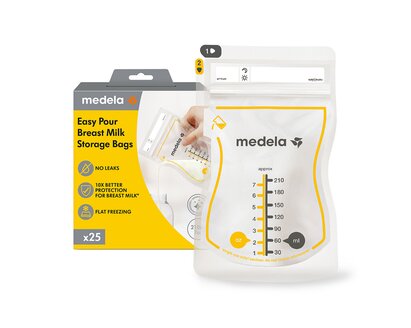Eglash, A. ABM clinical protocol #8: Human milk storage information for home use for full-term infants (original protocol March 2004; revision #1 March 2010). Breastfeed Med 5, 127-130 (2010).
Eteng, M.U., Ebong, P.E., Eyong, E.U. et al. Storage beyond three hours at ambient temperature alters the biochemical and nutritional qualities of breastmilk. Afr J Reprod Health 2001;5:130–134.
Hill, P.D., Aldag, J.C., Chatterton, R.T. Initiation and frequency of pumping and milk production in mothers of non-nursing preterm infants. J Hum Lact. 2001;17(1):9-13
Hill, P.D., Aldag, J.C., Chatterton, R.T., Zinaman, M. Comparison of Milk Output Between Mothers of Preterm and Term Infants: The First 6 Weeks After Birth. J Hum Lact. 2005 February 1, 2005;21(1):22-30.
Human Milk Banking Association of North America 2011 Best practice for expressing, storing and handling human milk in hospitals, homes, and child care settings (HMBANA, Fort Worth,( 2011).
Kent, J.C. et al. Importance of vacuum for breastmilk expression. Breastfeed Med 3, 11-19 (2008).
Meier, P.P., Engstrom, J.L., Janes, J.E., Jegier, B.J. & Loera, F. Breast pump suction patterns that mimic the human infant during breastfeeding: Greater milk output in less time spent pumping for breast pump-dependent mothers with premature infants. J Perinatol 32, 103-110 (2012).
Morton, J., Hall, J.Y., Wong, R.J., Benitz, W.E. & Rhine, W.D. Combining hand techniques with electric pumping increases milk production in mothers of preterm infants. J Perinatol 29, 757-764 (2009).
Parker, L.A., Sullivan, S., Krueger, C. & Mueller, M. Association of timing of initiation of breastmilk expression on milk volume and timing of lactogenesis stage II among mothers of very low-birth-weight infants. Breastfeed Med (2015).
Prime, D.K., Garbin, C.P., Hartmann, P.E. & Kent, J.C. Simultaneous breast expression n breastfeeding women is more efficacious than sequential breast expression. Breastfeed Med 7, 442-447 (2012).
Torowicz, D.L., Seelhorst, A., Froh, E.B., Spatz, D.L. Human milk and breastfeeding



















